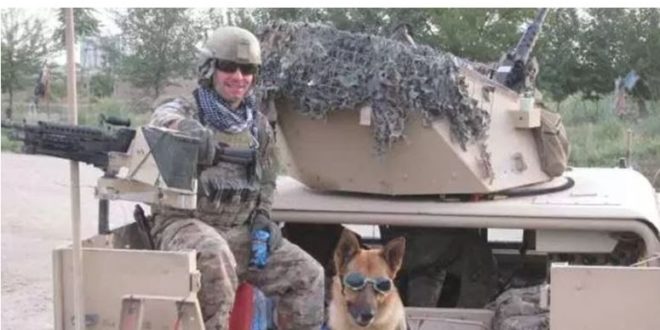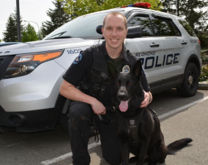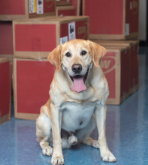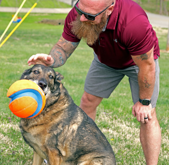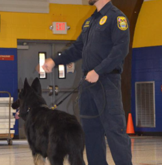Died 1/24/18
Handler – Staff Sgt. Jason Spangenberg
Tearful squadron shows up to salute last moments of dying hero dog
Rico, a beloved and decorated veteran of the War in Afghanistan, had been partially paralyzed by what is effectively a canine version of ALS. As Rico the dog was carried toward his final vet appointment, he encountered a gauntlet of saluting service members lining the clinic’s front walkway for a solemn goodbye. The 11-year-old bomb-sniffing German shepherd was a veteran of the War in Afghanistan and a holder of the Bronze Star. Over a career that spanned 160 combat missions, Rico is credited with discovering more than 90 kg of homemade explosives. Now, weakened by a spinal cord disease, Rico was carried by his former handler toward a euthanization appointment as an Air Force bugler played Taps, the U.S. equivalent of the Last Post. “Security forces members struggled to keep their bearing,” read a statement from Dover Air Force Base. Although one of many dogs who served with the 436th Security Forces Squadron, Rico was a particular favorite of the unit. The dog’s image has already been immortalized in a war dog memorial in Dover, Delaware, and Rico’s 2016 retirement was honored with an official ceremony. It was at that ceremony that former handler Jason Spangenberg, who shared a twin bed with Rico in Afghanistan, credited the dog with saving his life. “I can honestly say if it wasn’t for my dude here next to me in Afghanistan, I wouldn’t be standing here in front of all of you today,” said the now-retired Staff Sergeant. Spangenberg, who was wounded by an IED while in Afghanistan, adopted the retired Rico as a family pet during the animal’s last two years. Known officially as MWD (Military Working Dog) Rico, the dog first began work with the U.S. Air Force in 2008. Trained as both a patrol dog and bomb sniffing dog, Rico served on multiple overseas deployments and even several Secret Service operations. The sheer volume of explosives uncovered by Rico and Spangenberg was what earned the pair the Bronze Star, the fourth-highest U.S. decoration for valor. “I know Rico is in a better place and is running around again finding bombs and biting bad guys,” one of his former handlers, Tech. Sgt. Matthew Salter, said at Rico’s final goodbye ceremony. At the time of his death, Rico was partially paralyzed with canine degenerative myelopathy, a disease that is effectively a dog version of ALS. It begins with a numbing of the dog’s back legs, and then gradually spreads until the animal is completely paralyzed. Spinal problems had forced Rico into early retirement in 2016, after an army veterinarian found that the dog was no longer able to run long distances without suffering severe pain. Rico was put down on Jan. 24, although this week he was recognized with a viral tweet by the U.S. Department of Defense’s Twitter account. The memorial ceremony concluded with a “last call” over the radio. A tradition of police forces and firefighters, it involves issuing a final radio call to a fallen member. “To all cars, posts and patrols … Standby for last call … End of watch for MWD Rico,” went the broadcast.
